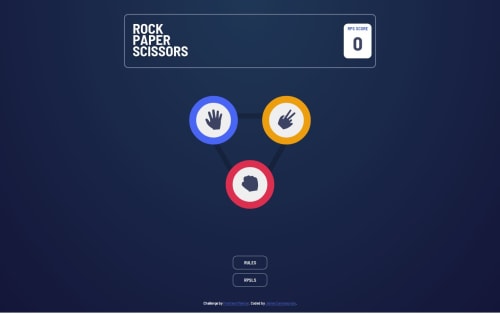Responsive Rock, Paper, Scissors App using HTML, CSS, JS, TS and React

Solution retrospective
What I'm most proud of is that I can take on more difficult challenges, I'm proud that I was able to quite easily think of how to accomplish this advanced challenge and I'm proud that I learned from my previous challenges and incorporated them onto this challenge again!
I'm also proud of incorporating TypeScript, Vite and React into this challenge!
If I were to do anything differently next time it would be to use React hooks, I thought of learning and using them here but I wasn't familiar with them so I avoided it, but now, I'm ready to take on the challenge and learn more React!
What challenges did you encounter, and how did you overcome them?The challenges I encountered include:
- Not being knowledgeable in functions when using React.
- Not knowing how to reference a HTML Element in TypeScript. I overcame them by:
- Researching on how to properly create and use functions in React using arrow functions.
- Researching how to reference and create HTML Elements references in TypeScript for tinkering with HTML Elements using functions.
The areas in my project I would like help with would probably be the following:
- How to use React hooks in my application, I know there is a lot more better ways in tackling the challenge, and I know using hooks would be a better way to go, but being unfamiliar with it I would love help with that.
- TypeScript and the proper way of coding in TypeScript, I think I did a good job, but I think there are more better ways to do it.
- Better CSS, like Tailwind CSS, which I'm starting to familiarize myself with but still no proper practice on it and would like to be taught it for future projects!
Please log in to post a comment
Log in with GitHubCommunity feedback
No feedback yet. Be the first to give feedback on Jaime Contemprato's solution.
Join our Discord community
Join thousands of Frontend Mentor community members taking the challenges, sharing resources, helping each other, and chatting about all things front-end!
Join our Discord